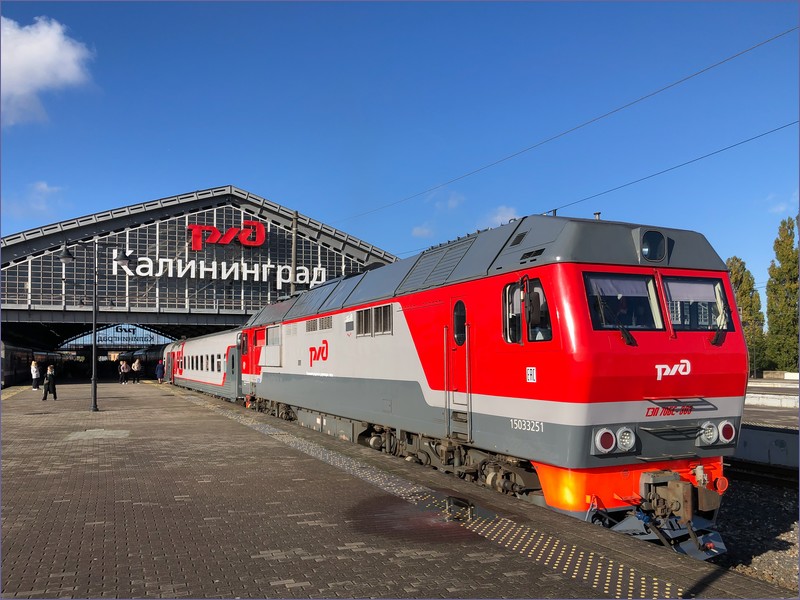Train travel in Russia is possible between almost all major cities of the Russian Federation. Russia is a vast country, and sometimes train takes need a week to reach a final station. The number of modern and refurbished trains increases every year despite huge military spending. Russian aggression against Ukraine has resulted in the suspension of numerous international connections, but it is possible that Russia will want to expand its territory in the coming years, so these trains may reinstated as domestic trains.
Almost all trains in Russia are operated by Russian Railways ( Российские железные дороги)
Last updated: 07.07.2024
Table of contents:
1. Domestic trains
2. Types of the trains
3. Types of the carriages
4. Circum-Baikal Railway
5. Sapsan
6. Strizh
7. Yakutian Railways
8. Yamal Peninsula
9. International trains
10. Trans-Siberian Railway
11. Aeroexpress in Moscow
12. Ruskeala Express
13. Red Arrow train
14. Zarengold train
15. Non-public broad-gauge railways
16. Narrow-gauge railways
17. Monorails in Russia
18. Funicular railways in Russia
19. Railways on Sakhalin
20. Railways in Crimea
21. Trains in Kaliningrad Oblast
1. Train travel in Russia – domestic trains
Every traveler planning a trip to Russia should remember the addresses of two useful websites:
pass.rzd.ru – website of Russian Railways, where you can buy tickets for long-distance and international trains. It does not work for people from some countries.
www.poezdato.net – timetable of long-distance trains in Russia and the former Soviet republics. Possibility to search the timetable by station and buy tickets for some trains. Currently, the website works very slow due to numerous advertisements.
www.tutu.ru – Russian ticket sales agent. Tickets for trains, buses, planes, timetables with drawn connection maps.
Tickets can be purchased 40 days in advance. Long-distance trains in Russia have only reserved seats, berths and beds. Tickets for long-distance trains are relatively expensive, especially if you choose high quality trains.
Russian trains are considered safe, but due to political situation foreigners may face hostility. During long, sometimes several hours long stops at railway stations, you can buy all kinds of food and groceries.
There are trains from Moscow and Sankt Petersburg to Kaliningrad. These trains pass through the territory of Belarus and Lithuania.
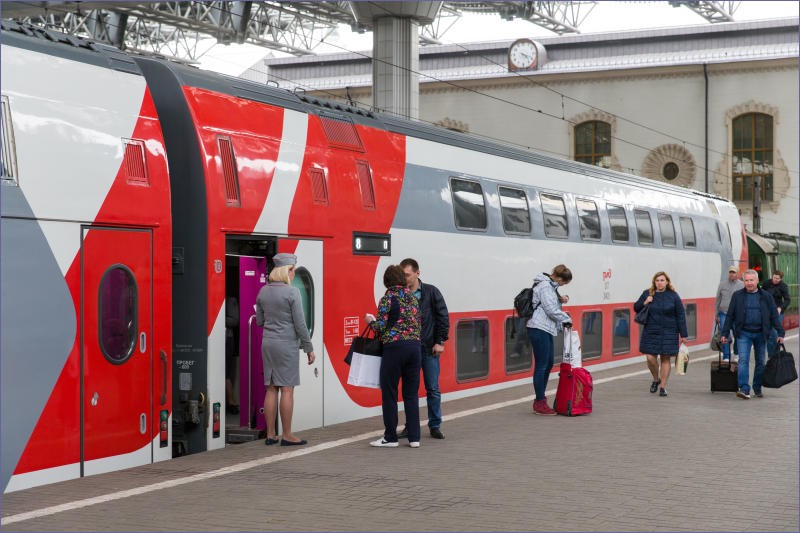
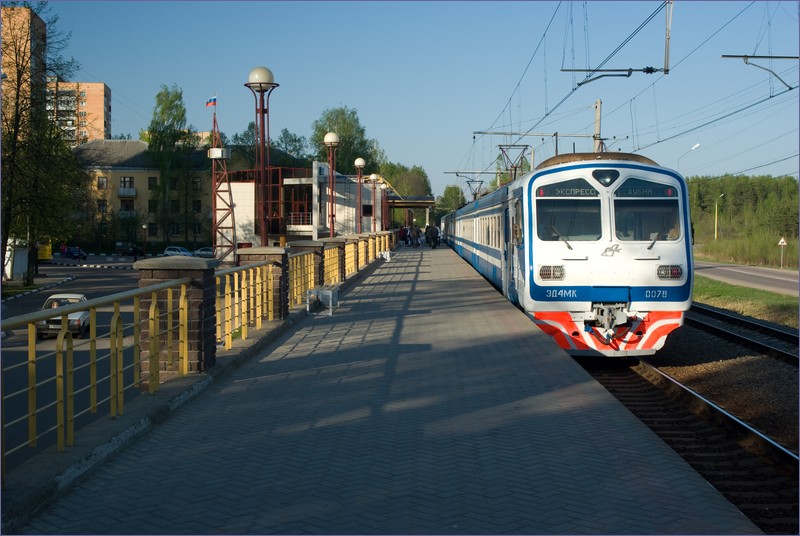
Train travel in Russia – basic information:
– since May 2018, trains in Russia run according to local time, not Moscow time.
– on Russian long-distance trains, tickets are personal, valid only with a passport.
– trains arrive at the starting stations approximately 40 minutes before departure
– don’t forget about refreshing wipes. Showers can only be found in the newest carriages.
– most long-distance trains have dining cars.
– in each carriage, passengers have a samovar with boiling water at their disposal, so you can make tea, coffee or powdered soup at any time.
– there are sanitary zones around cities – toilets are closed when passing through the city according to the schedule posted on the toilet door. In Moscow, this may be up to an hour before reaching the station. Fortunately, more and more Russian carriages are equipped with vacuum toilets and you can forget about the sanitary zone.
– a very important person in each overnight carriage is “provadnitsa”. Most often, there are two women working in shifts in each carriage of a long-distance train. Before entering, they check tickets and identity documents, provide bed linen, clean toilets several times a day, ensure safety, and help with boarding and disembarkation.
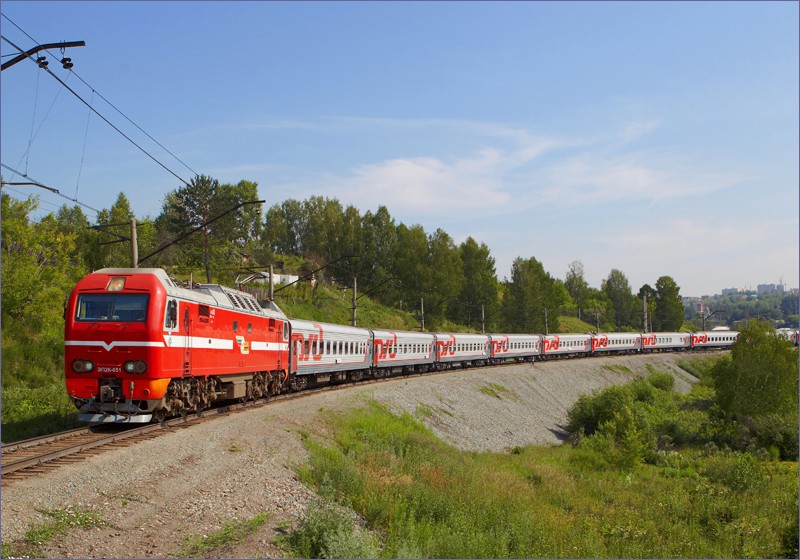
2. Trains in Russia – types of the trains
Train travel in Russia may seem complicated. There are two clocks at each station – one with Moscow time, the other with local time. Long-distance trains (poezd) run according to Moscow time, while suburban trains (elektrichka) run according to local time. Trains in Russia are generally divided into six categories, but there are exceptions.
firmiennyj (фирменный) – firmiennyj trains are named or branded trains launched by Russian Railways. Trains of this type are much expensive than traditional ones, but passengers can be assured of high-quality services. These trains stop only at major stations and the carriages are refurbished and air-conditioned. The most famous train of this type is the 1/2 “Russia” train from Moscow to Vladivostok.
niefirmiennyj (нефирменный) – most common long-distance trains, usually comprised of non-refurbished platzkart coaches and sleeper cars, usually without VIP/LUX/SV cars. The quality of services is lower, so the tickets are much cheaper.
skorostnoj (скоростной) – new generation of fast trains running between the largest cities. This category includes, for example, Sapsan trains running on the Moscow – Saint Petersburg route. They are often named after bird species. These trains are usually equipped with air-conditioning and vacuum toilets.
skoryj (скорый) – an express train generally. Express trains in Russia run on long-distance routes and do not stop at all stations. The category includes “фирменный” or “нефирменный” trains; they differ in the quality of passenger carriages.
pasazirskij (пассажирски) – a long-distance train stopping at every station.
prigorodski (пригородный) – suburban train, also called “elektritschka”. The interior is usually made of plastic, metal or even wooden benches with an opposite 3+3 seating arrangement. These trains usually run around largest cities.
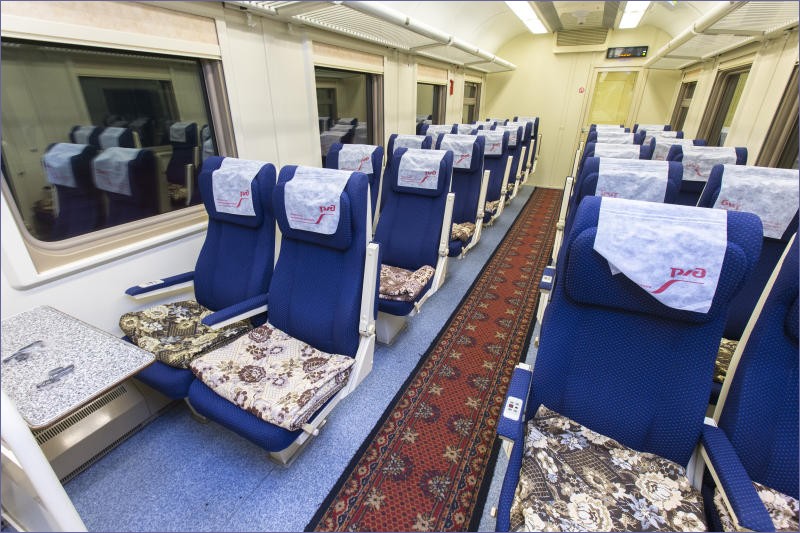
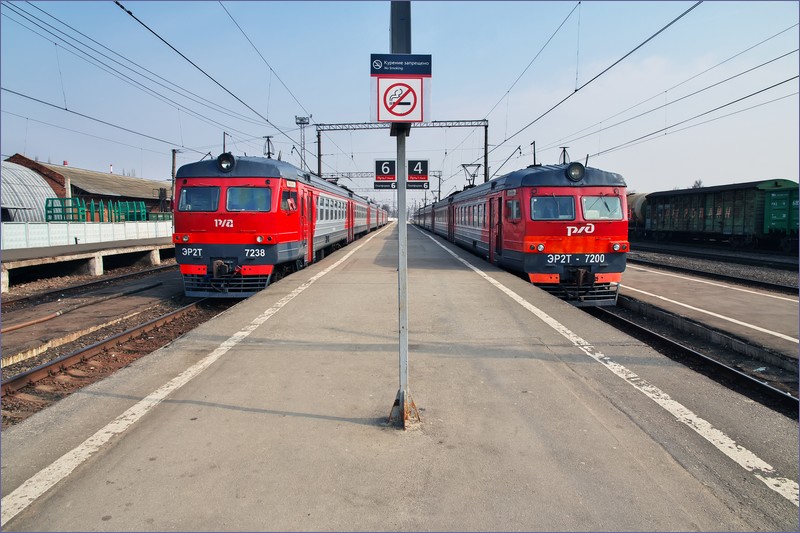
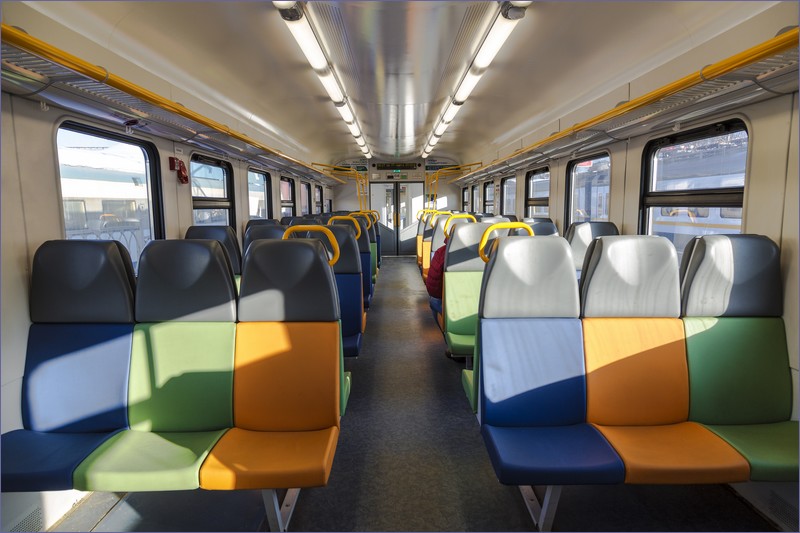
3. Trains in Russia – types of the carriages
In timetable you can notice some types of passenger carriages very common in former Soviet Union countries:
VIP – luxurious double compartments equipped with, among others: with a flat-screen TV, a DVD table, a toilet and a shower. There is a fully equipped bar at guests’ disposal. In addition, they are provided with clean bedding and three meals a day. There are only 4 such compartments in one carriage, which can accommodate 8 people.
LUX/SV (1st class) – double compartments with comfortable, fold-out sofas. The standard varies depending on the train – you may find compartments with televisions. The carriages are usually air-conditioned and additionally soundproofed. Each carriage of this type has a shower. One carriage has 8 compartments and 16 seats.
Kupe «K» – sleeping car “Kupe”. Most common sleeping car with 4-bed compartments. Two upper beds and two lower beds. Each carriage has nine separate compartments with four bunks.
Platskart car “PL” – couchette car popular in Ex-USRR countries. Cheap and comfortable option with unique atmosphere but no privacy. The open-class carriage consists of 54 bunks, arranged in bays of 4 on one side and bays of 2 on another. There is an aisle between the two sides. In practice, it is an ordinary carriage without compartments, with places to sleep. Reviews of travelers vary – some are bothered by the lack of privacy, others love these carriages for the opportunity to get to interaction with fellow passengers. There is a storage compartment under the lower bunk where you can store your luggage, so you don’t have to worry about someone stealing it at night.
Obshtyj “O”– cheapest and uncomfortable old seating carriage. Recommended only for young adventure lovers who want to spend as little money as possible or for very short journeys.
Sidiatshyj – seating carriage with 62 seats. Quality varies.
Diesel and electric multiple units have various arrangement of seats.
This is a basic division of the passenger carriages in Russia. There are modern double-decker couchette cars or comfortable seating carriages in long-distance trains.
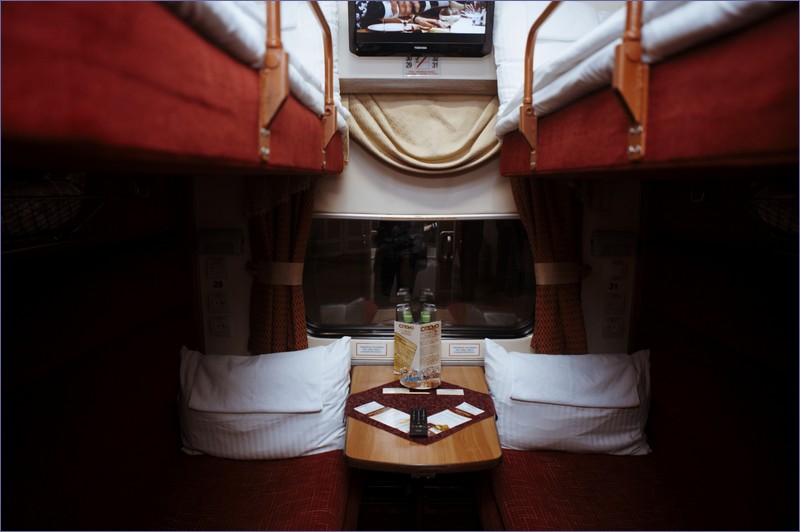
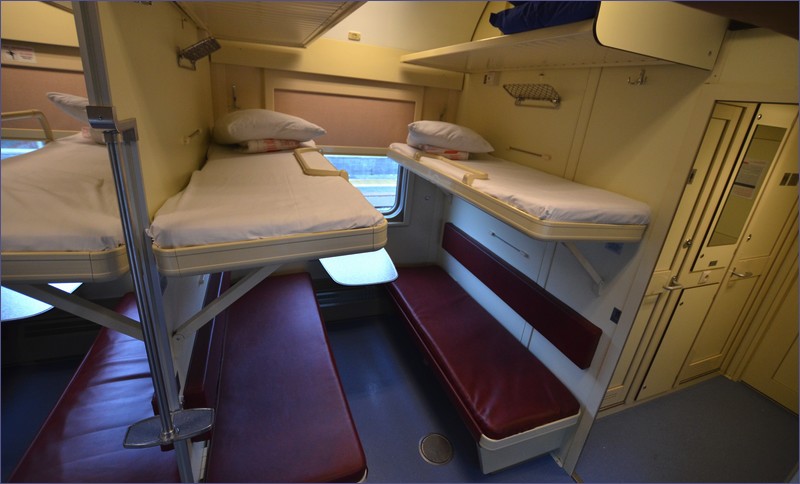
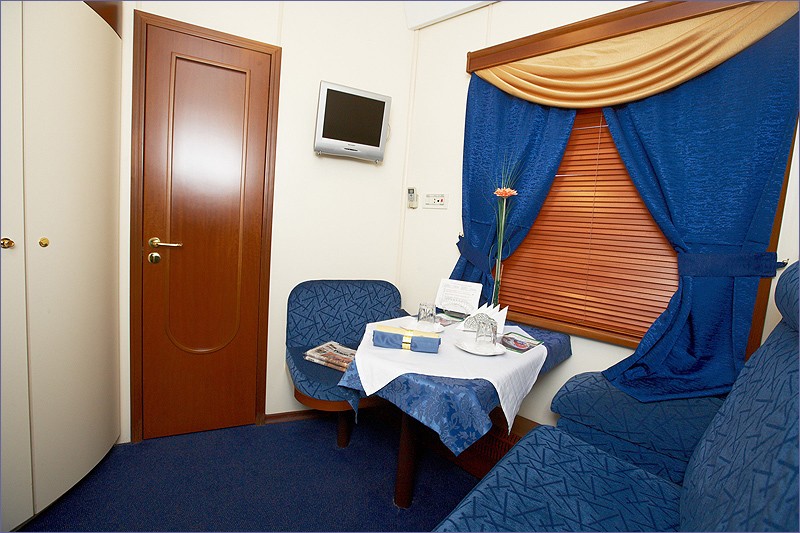
4. Circum-Baikal Railway
The Circum-Baikal Railway (Кругобайкальская железная дорога) is one of the most famous railway attractions in Russia. The route of the Circum-Baikal Railway is approximately 89 kilometers long, and the line partly runs along the shores of Lake Baikal. The line was formerly part of the Trans-Siberian Railway. In the 1950s, a new route was built between Irkutsk and Sludyanka through the Olkha Plateau. At the same time the construction of a hydroelectric power plant in Irkutsk was started and in 1956 the filling of the retention reservoir began, as a result of which part of the old line was flooded and part was dismantled. The surviving part is used as the Circum-Baikal Railway.
Trains run on the Sludyanka – Port Baikal route. Trains don’t run every day, so many tourists choose to walk along the tracks. These trains are very slow, some of them cover the entire route in about 5 hours. The locals call them “matania”. During the season, tourist trains are also run, including steam locomotive trains (May – October), also on the Irkutsk – Slyudianka route. There are 38 tunnels along the route with a total length of 9,063 m, and the longest of them is 777.5 m.
Passengers can reach Sludianka by long-distance and suburban trains. Journey time by electric train from Irkutsk to Sludyanka is over 3 hours. In the town you can visit the Mineral Museum.
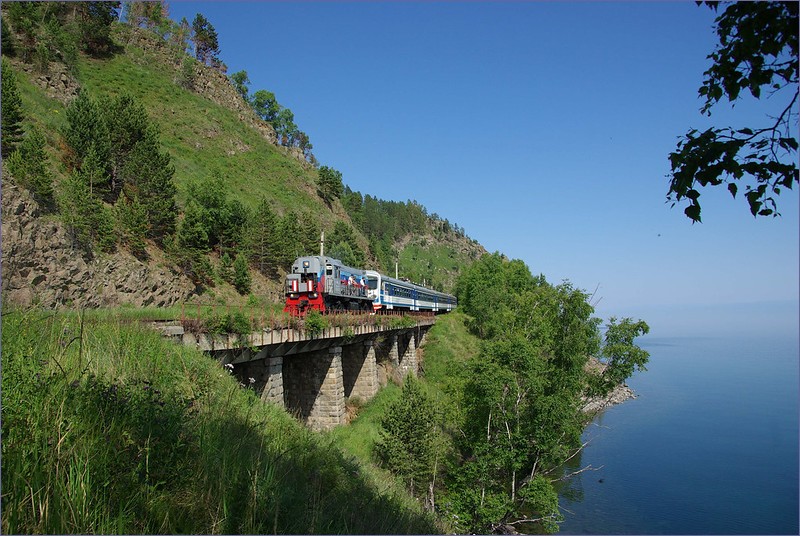
5. Train travel in Russia – Sapsan train
Sapsan is a brand of the high-speed Russian train running since December 2009 between Moscow, Saint Petersburg and Nizhny Novgorod. The Russian word “sapsan” means “falcon”. The connection is served by trains manufactured by Siemens, at first glance very similar to the German ICE 3. The train runs at a maximum speed of 250 km/h, after modernization it is expected to reach a speed of 330 km/h. One train can carry up to 604 people. The route between Moscow and Saint Petersburg takes 3 hours and 55 minutes. There are five pairs of trains a day. There are two classes on the train – business and tourist. Ticket prices vary depending on the day of the week and the time of departure of the train.
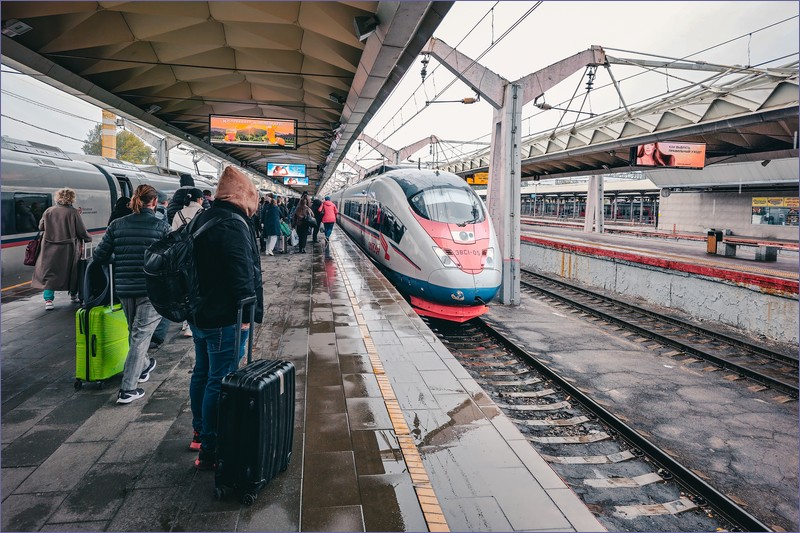
6. Trains in Russia – Strizh
Strizh (Стриж) is a brand of high-speed express Russian trains running on the Moscow – Nizhny Novgorod (since June 1, 2015) and Saint-Petersburg trains. Before pandemic these trains operated on Moscow – Berlin route. Strizh trains are Talgo-family trains, well known from Spain, Kazakhstan and Uzbekistan. Russian trains of this type have first-class carriages without compartments (cars 8 and 9), second-class carriages (cars 10-18), sleeping cars with two-bed compartments (cars 1-5), a restaurant car and a bar car. All carriages are air-conditioned and equipped with vacuum toilets. Second class carriages have a 2+2 seating arrangement, first class carriages have a 2+1 seating arrangement. In sleeping cars, each compartment is equipped with a toilet and a shower. The cars are pulled by an EP20 locomotive.
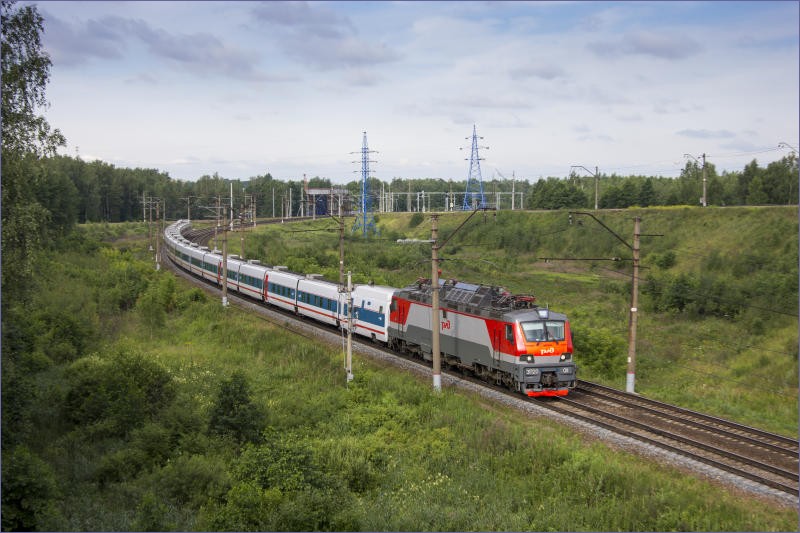
7. Train travel in Russia – Yakutian Railways
Yakutia Railways (Железные дороги Якути) is a railway operator in Yakutia. Russian Railways and the authorities of the Republic of Sakha (Yakutia) have 50% shares. Yakutia Railways was established in 1995, the carrier operates freight and passenger services on the Tommot – Nizhny Bestyakh route.
Construction of the Berkakit – Tommot – Yakutsk railway line began in 1985. In 2004, passenger trains were launched to the Tommot station, and in 2011, the construction of the line was officially completed, bringing the tracks to the Nizhny Bestyakh station. Since 2014, freight trains have been running on the Tommot – Nizhny Biestiach section, and only on July 27, 2019, passenger transport on the Tommot – Nizhniy Bestyakh line was officially inaugurated. According to the Open Stret Maps and Google maps, the Nizhny Bestyakh railway station is located 15 kilometers from the town of Manday and the ferry port on Lena, from which the Yakutsk – Nizhny Bestyakh ferry departs.
There is a bus service between the Nizhny Bestyakh railway station and the ferry port. In the future, it is planned to build a bridge over the Lena River and extended the railway line directly to Yakutsk.
Yakutian Railways – official website, timetable, additional information
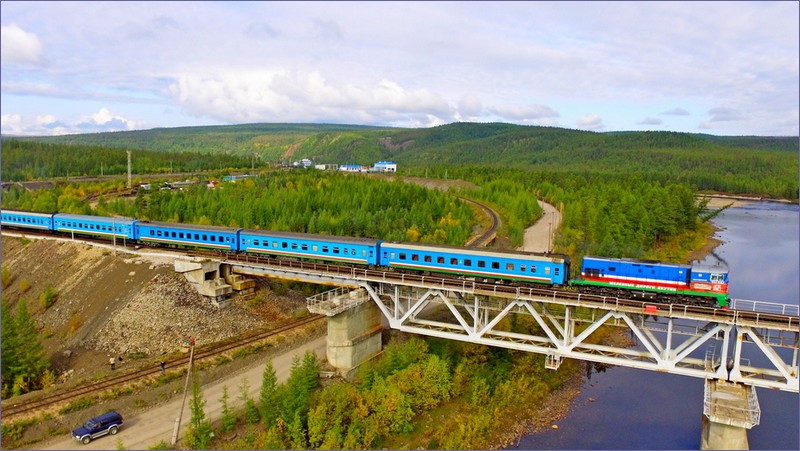
8. Yamal Peninsula
One of the greatest achievements of modern Russian engineering was the construction of a railway line on the Yamal Peninsula leading to the Bovanenkovskoye natural gas field. The first plans to build a railway line in that area appeared in the early 1980s. Construction began in 1988 and was scheduled for completion in 1990. Due to severe frosts in winter and floods and insects in summer, work progressed slowly. The political crisis, the collapse of the USSR and the economic crisis prevented the completion of the investment. By 1995, 224 kilometers of tracks were laid, and passenger and freight transport was launched on the Obskaja – Pajuta section. In 2003, an agreement was concluded between Gazprom, Russian Railways and local authorities – the company agreed to complete the construction of the line.
The construction of the Pajuta – Bovanenkovo section started in 2006. The difficulties included construction of a 4-kilometer bridge across the Yuribe River; Innovative technologies developed by Russian academic centers were used in the construction of the railway embankments. It was also necessary to build flood protection. The Obskaya – Bovanenkovo railway line was put into operation in 2010. The length of the line is 572 kilometers. Located near the Arctic Circle, it is the northernmost railway line in the world. It runs through wastelands covered with permafrost. Between the starting and ending stations is the 8 stations and about 70 bridges.
The owner of the railway line is Gazprom, which is why it is also called the “Gazprom Railway”. Freight trains and passenger trains carrying are available for employees only.
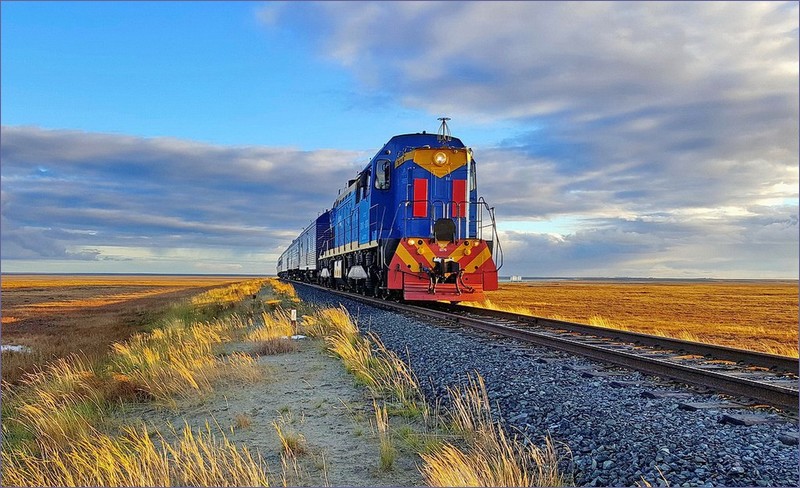
9. Train travel in Russia – international trains
There are many international trains running between Moscow and the countries of the former USSR. When Russia attacked Ukraine, international trains to some countries were suspended.
The most important international trains in Russia:
Abkhazia – there is a passenger train from Moscow to Sukhumi.
Azerbaijan – no international trains.
Belarus – many international trains between Belarus and Russia, for example Hrodna – Saint Petersburg, Brest – Saint Petersburg, Grodno – Moscow, Murmansk – Minsk, Murmansk – Brest, Minsk – Arkhangelsk, Minsk – Novosibirsk trains.
China – one of the routes of the Trans-Siberian Railway is Moscow – Beijing.
Estonia – international trains suspended due to Russian aggression against Ukraine.
Finland – interational trains suspended due to Russian aggression against Ukraine.
Lithuania – trains from Russia to the Kaliningrad Oblast pass through Lithuania.
Latvia – international trains suspended due to Russian aggression against Ukraine.
Kazakhstan – many trains, for example Moscow – Karaganda train.
Kyrgyzstan – Moscow – Bishkek, Yekaterinburg – Bishkek, Kazan – Bishkek and Novosibirsk – Bishkek trains.
North Korea – train from Moscow to Pyongyang was resumed in 2025. It runs twice a month.
Moldova – trains from Moscow and Saint Petersburg to Chisinau were ceased after Russia invaded Ukraine.
Mongolia- no information available
Tajikistan- there are trains from Moscow to Dushanbe, Khujand and Kulob in Tajikistan. These trains are mainly for workers from Tajikistan returning from work in Moscow to their country and back.
Ukraine – no trains between Russia and Ukraine.
Uzbekistan – there are passenger trains Moscow – Tashkent, Ufa – Tashkent, Kazan – Tashkent, Chelyabinsk – Tashkent, Moscow – Andijon.
There is no train between Russia and Turkmenistan, although the Moscow-Dushanbe train passes through the territory of Turkmenistan without stop.
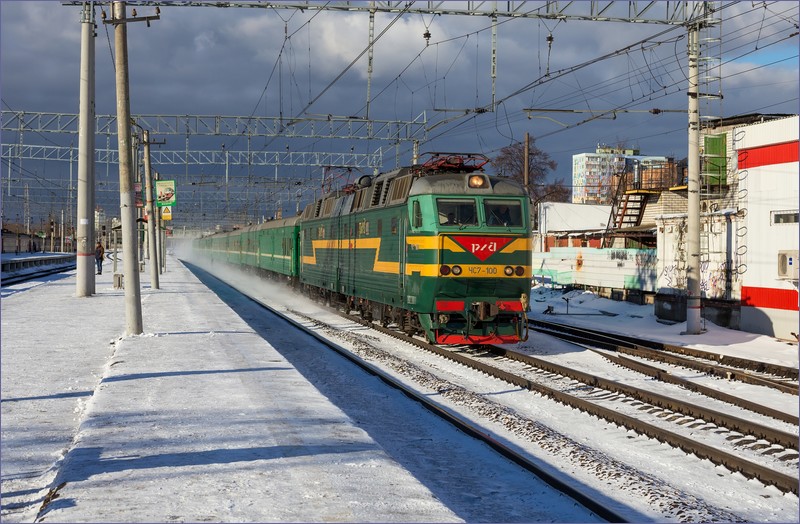
10. Trans-Siberian Railway
Traveling on the Trans-Siberian Railway is a dream for almost every railway enthusiast — and not only them. Almost anyone who has ever read even a little about train travel begins to dream of taking such a long journey.
The statistics are well known to most. In reality, the Trans-Siberian Railway is a network of railway lines, primarily located in the Asian part of Russia. When people say “Trans-Siberian Railway,” they usually mean the Trans-Siberian line from Moscow to Vladivostok. This is the longest railway line in the world, with a total track length of 9,288.8 km. Over the course of more than six days (6 days + 4 hours), the train passes through eight time zones. The entire line is electrified. Construction began in 1891, and by 1901 the railway was operational, although at the time, passengers were ferried across Lake Baikal.
When it comes to actually traveling on the Trans-Siberian Railway, opinions vary. Some say it’s a fantastic adventure, offering the chance to meet fascinating people. Others complain about monotonous landscapes, boredom, heavy drinking, unpleasant company, poor hygiene conditions, and lack of privacy — in short, they feel it’s overrated. It’s hard to say who’s right. In my view, it all depends on what you enjoy.
It’s worth noting that such a journey is not cheap, especially if you want to travel in a class higher than the plackartny (open-plain sleeper car). Still, it’s an experience that leaves memories for a lifetime.
Main Routes of the Trans-Siberian Railway
The term “Trans-Siberian Railway” actually covers several different railway routes. Here are the most important ones:
Main Line – Trans-Siberian Railway
The main route is the line from Moscow to Vladivostok, passing through cities such as Nizhny Novgorod, Omsk, Krasnoyarsk, and Irkutsk. Electrified since 2002, this is the longest railway line in the world, crossing 8 time zones, with a total track length of 9,288.8 km.
Trans-Mongolian Railway
The second route is the Trans-Mongolian Railway. It follows the same path as the Trans-Siberian until Ulan-Ude on the eastern shore of Lake Baikal, then veers south toward the Mongolian capital Ulaanbaatar, ending in Beijing. This is the shortest railway route between Moscow and Beijing, covering 2,215 km. It was built between 1949 and 1961, with most of the Russian and Mongolian sections being single-track, and the Chinese section double-track.
Trans-Manchurian Railway
The third route is the Trans-Manchurian Railway, which follows the Trans-Siberian mainline until Tatarskaya, then heads toward Beijing and Pyongyang, the capital of North Korea.
Baikal-Amur Mainline (BAM)
The Baikal-Amur Mainline, 4,234 km long, was built as a strategic alternative to the Trans-Siberian Railway. It runs parallel to it, 680–840 km further north. The line starts in Tayshet and ends in Sovetskaya Gavan, a town on the Pacific Ocean.
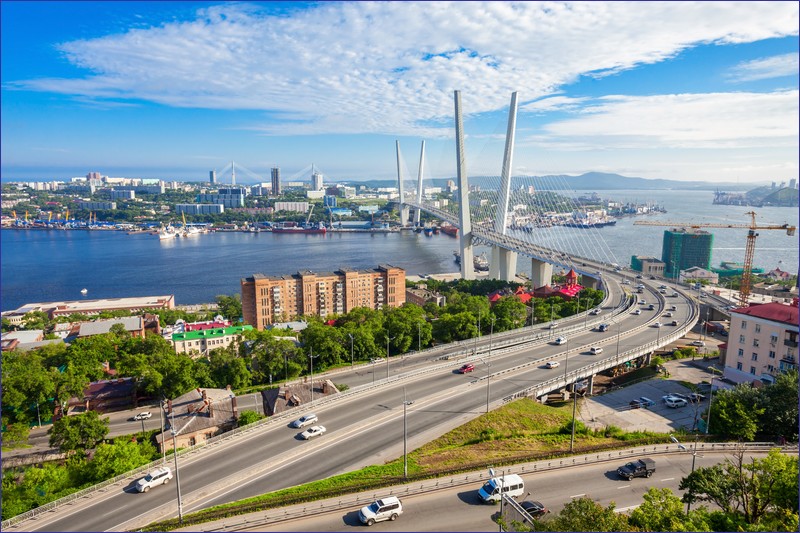
11. Aeroexpress in Moscow
Aeroexpress trains connect the most important international airports in Moscow with the city center. The trains run regularly every 30 minutes from 6 a.m. until midnight. Travel time is about 50 minutes.
Passengers can choose between two classes – Economy and Business. In Business Class, seat reservation is included in the ticket price, while in Economy Class, passengers can choose their seats themselves.
Aeroexpress is the fastest and most comfortable way to get from the airport to the city center. Currently, trains run between Domodedovo and Sheremetyevo airports and Belorussky, Savelovsky, and Paveletsky railway stations in Moscow.
Aeroexpress – official website

12. Ruskeala Express
The Ruskeala Express is a steam-hauled heritage train. It runs on the route between Sortavala and Ruskeala Mountain Park in Karelia, approximately 270 kilometers west of Saint Petersburg. The train is comprised of vintage carriages decorated in the style of the famous “Nikolaev Express” that operated in the 19th century. Therea are compartment coaches, a dining car, a VIP car, and a special photo compartment where travelers can take souvenir pictures. In past years, the train was coordinated with arriving trains from Saint Petersburg at Sortavala Station.
The one-way journey from Sortavala to Ruskeala Mountain Park takes about one hour. After arrival, the steam locomotive enters a historic turntable. The return trip begins a few hours later. In the summer season, the train operates several times a day.
Ticket prices are relatively high, and some tourists are disappointed that the train functions more as a commercial tourist attraction than as regular transport.
Ruskeala Express – official website
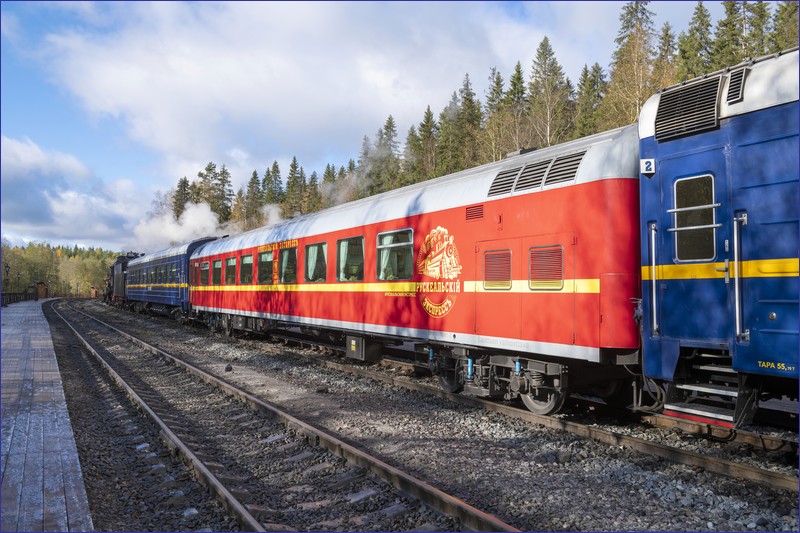
13. Red Arrow train
The “Red Arrow” train is one of the symbols of Russian railways—a luxurious night train running between Moscow and Saint Petersburg. Once reserved for Party officials, it is now primarily aimed at wealthy tourists who don’t mind spending a significant amount of money to travel in elegant, high-end carriages.
The train, made up of 15 to 17 cars depending on the season, departs simultaneously from Moscow and Saint Petersburg at 11:55 PM. Departures are accompanied by patriotic songs broadcast through the station loudspeakers. The journey takes eight hours.
The train includes:
– Kupe cars (2nd class): Four-person compartments with toilets at both ends of the car.
– SV sleeping cars (1st class): Two-person compartments featuring a panoramic window and a large bed.
– LUX class cars: Each compartment has a private bathroom and heated floors. The LUX class consists of four compartments per car, resembling private apartments.
– A dining car is also part of the train’s composition.
The ticket price includes bedding, newspapers, a personal hygiene kit, snacks, breakfast, and in the higher classes, hot meals and hot beverages.
However, ticket prices for the Red Arrow make it unaffordable for ordinary tourists.
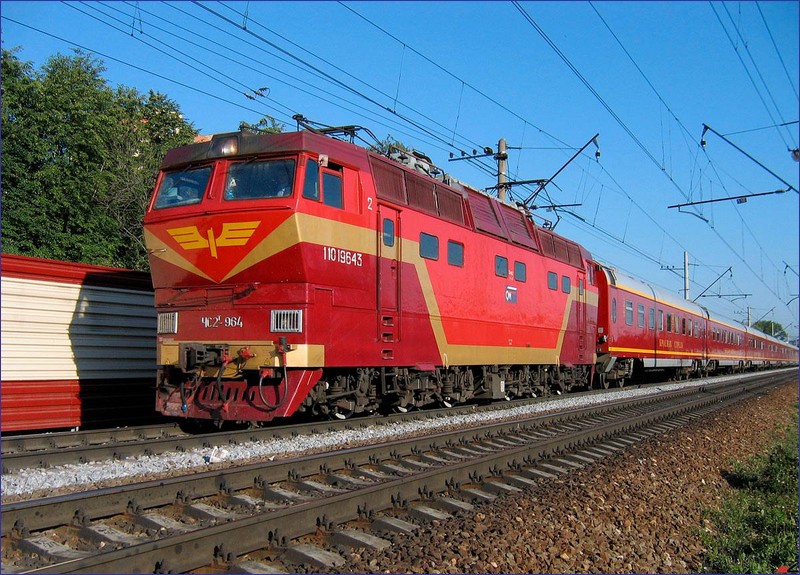
14. Zarengold train
Luxury train tours for wealthy tourists are popular all around the world. Luxury tourist trains operate in India, South Africa, and several European countries, and a similar train is also offered by Russian Railways. The Zarengold—meaning “Tsar’s Gold”—is a tourist train composed of retro-style cars in several classes. As with other trains of this type, various tour programs are available. The train can also be chartered by travel agencies, provided they gather enough participants and coordinate the itinerary with the Russian Railways tour office.
The most famous Zarengold trip is the Moscow–Beijing route, combined with sightseeing in key cities along the way, including Novosibirsk, Kazan, Irkutsk, Ulaanbaatar, and Beijing. Passengers sleep on the train and spend the days exploring the cities with licensed guides. This journey typically lasts around 14 days, though agencies can organize longer versions. Shorter trips are also available—for example, only to Irkutsk. In 2017, a German travel agency organized a Saint Petersburg–Murmansk trip.
Several classes of service are available on the train:
The most affordable class features four-person compartments (“kupe”) with shared toilets at both ends of the carriage.
Mid-range classes offer two-person compartments, with shared toilets and showers between every two compartments.
In the highest class, each two-person compartment has its own private bathroom with a toilet and shower.
In the dining cars, passengers are served regional cuisine reflecting the areas being passed through.
The Zarengold train is included in the offerings of travel agencies specializing in rail tours. It is considered one of the most famous luxury tourist trains in the world, but the prices are unbelievable high.
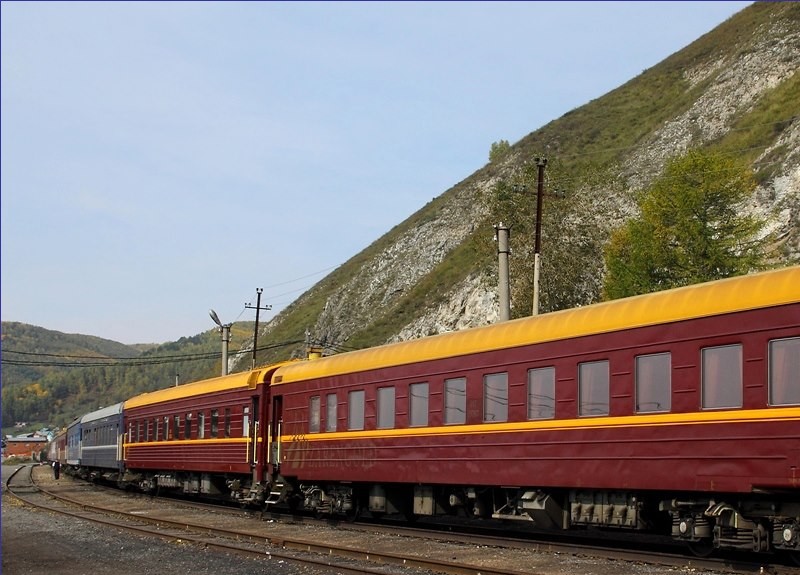
15. Non-Public Broad-Gauge Railways
Russian Railways manages an enormous network of railway lines. In addition to narrow-gauge and children’s railways, there are several broad-gauge railway networks operated primarily by large industrial companies, usually in the mining sector, such as the railway network near Norilsk. Currently, passenger services operate on only three of these networks, with one of them having suspended service after a special train accident.
Monza Railway (Монзенская железная дорога) – the name of a broad-gauge railway network near Vochtoga in the Vologda Oblast. The railways were built through taiga forest areas and are operated by a company that owns sawmills in the region. The network totals 268 kilometers, though many sections are no longer in use due to the unprofitability of freight transport. Passenger trains only run on the Vochtoga–Kamenka section. On other sections, special trains for rail enthusiasts are occasionally run.
In 2019, there was a crash between a car and a special train, putting the future of passenger services on this network in doubt. Monza Railway trains depart from a separate station in Vochtoga—Vochtoga 2.
Zaonezhskaya Railway (Заонежская железная дорога) – a single-track, non-electrified railway in the Arkhangelsk Oblast, near the urban-type settlement of Severonizhsk. Regular passenger service is offered between the stations Iksa and Yangory (101 km). The first 22 km section opened in 1940, with significant expansion in the 1960s, when Severonizhsk was established and a bauxite mine was built.
On the Iksa–Yangory section, passenger trains run three times a week. On the Puksa–Iksa section (27 km), only mine-related shuttle trains operate.
Sayanogorsk Aluminium Plant Railway (Железнодорожная линия Саяногорского алюминиевого завода) – A railway line within the network of the aluminium plant in Sayanogorsk, located in the Republic of Khakassia. Passenger trains operate between the stations Predzavodskaya and Sayanogorsk, transporting plant workers to and from the aluminium facility, which lies far from residential areas but still within city limits.
Former Passenger Broad-Gauge Railways
Until 2010, the Oborskaya Railway operated passenger services on the Kruglikovo–Nemptu and Kruglikovo–Sukpay lines in Khabarovsk Krai. These lines were dismantled in the 2010s.
Until around 2014 or 2015, passenger trains ran from Tekstilny stop in Ivanovo to Komsomolsk station near a thermal power plant. The 34-kilometer route operated seasonally (Fridays through Mondays from April to October, starting in 2007). In addition to plant workers, the trains were used by vacationers and mushroom pickers.
The line was shut down due to technical issues and lack of funds for repairs that would allow the owner, Ivanovskoe PPZhT No. 1, to obtain a passenger service license.
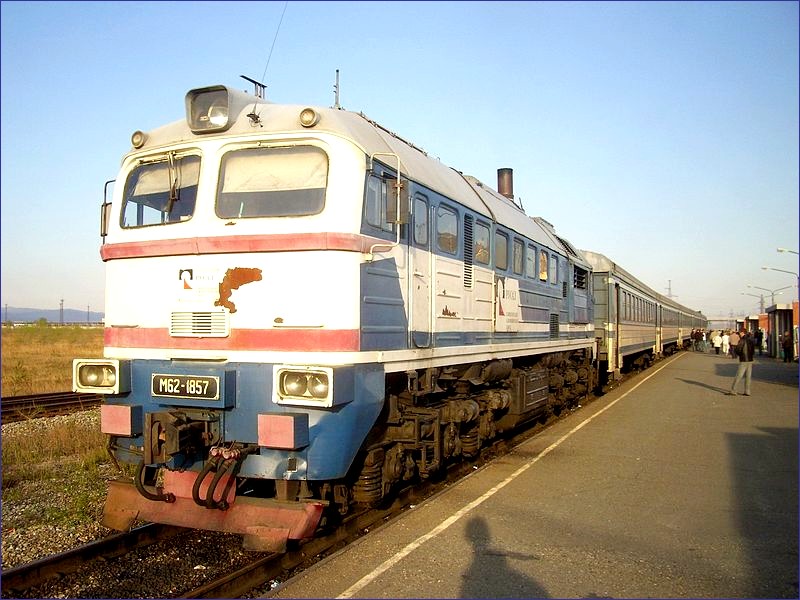
16. Narrow-gauge railways
Russia is a vast country, and I wouldn’t be able to compile a detailed list of all narrow-gauge railways. So I decided to at least include a list of the most important narrow-gauge railways with passenger services. There are many more railways, such as those at peat extraction sites, but I have no confirmation that passenger services are provided there. In recent years, several narrow-gauge lines have been closed.
Karynskaya Narrow-Gauge Railway (Каринская узкоколейная железная дорога) – Located in Kirov Oblast, this line runs from Novy station in the city of Kirovo-Chepetsk (50 km from Kirov) to Tekhnicheskaya station in the Karintorf district (formerly a village, now part of Kirovo-Chepetsk), crossing the Cheptsa River on a bridge. The route is about 13 km long.
This railway is a remnant of a former peat railway network that once exceeded 100 km in length. It is integrated into the public transport system. In the early 2000s, it faced closure, but there are now plans to turn it into a tourist attraction, including a small railway museum at Tekhnicheskaya station.
Apsheronsk Narrow-Gauge Railway (Апшеронская узкоколейная железная дорога) – a mountain narrow-gauge railway in Krasnodar Krai, built with a 750 mm gauge, opened in 1927. Of the original 127 km network, 37 km are currently operational. An additional 8 km scenic section from Guamka to Mezmay was restored for tourist trains only.
On the main line, freight, passenger, and mixed-use trains (towoso) run year-round. These are vital for residents of rural areas around Apsheronsk. Freight is mainly timber.In summer, tourist trains called the “Шпалорез Express” run with photo stops and guided tours.
Kudema Narrow-Gauge Railway (Кудемская узкоколейная железная дорога)- located in Severodvinsk, Arkhangelsk Oblast, it was originally built for timber transport.
From a former 100 km network, 35 km are still active, with both freight and passenger services. The starting station is in the village of Vodogon, about 9 km from central Severodvinsk.
Alapaevsk Narrow-Gauge Railway (Алапаевская узкоколейная железная дорога) – a network of lines around Alapaevsk in Sverdlovsk Oblast. The first section opened in 1898.
At its peak in the 1970s, the network exceeded 600 km. Today, 250 km are in operation for both passenger and freight traffic. The main line is Alapaevsk–Kalach, with two branches. In addition to regular services, tourist trains are occasionally run by travel agencies. Trains depart from the Alapaevsk-2 station, the former main station. Alapaevsk is accessible by suburban trains from Yekaterinburg (5 hours each way), which terminate at Alapaevsk-1, a different station. The narrow-gauge railway is the only rail link to Kalach village, not served by Russian Railways.
Lipakovskaya Narrow-Gauge Railway (Липаковская узкоколейная железная дорога) – Located in Arkhangelsk Oblast, it was a forest railway connecting the villages of Lipakov and Seza, built in 1949 for a sawmill in Lipakov. After the sawmill closed in 2000, the railway declined. In 2005, unused tracks were dismantled. Of the original 150 km, only 33 km remain, though also in poor condition. Trains used to run three times a week, with the 33 km journey taking about 100 minutes.
Tesovskaya Narrow-Gauge Railway (Тёсовская узкоколейная железная дорога) – a remnant of the peat railway network of a now-defunct peat company in Novgorod Oblast.
The line runs about 9 km in Tesovo-Netyl’skiy. There is a small railway museum near the station.
Pishchalsky Peat Railway (Узкоколейная железная дорога Пищальского торфопредприятия) – a narrow-gauge railway located near a peat mine in Mirny, Kirov Oblast, in operation since 1963.It transports peat and workers to the bogs. Peat is then shipped to a power station in Kirov. Line length: 35 km, gauge: 750 mm.
Meshchersk Peat Railway (Узкоколейная железная дорога Мещерского торфопредприятия) – a peat railway in Bolon, Ryazan Oblast, operated by ООО “Piter Pit” (formerly Meshchersky). Used for transporting peat and workers. Opened in 1952, currently 36 km of the original 46 km are in use. YouTube footage suggests only freight traffic remains.
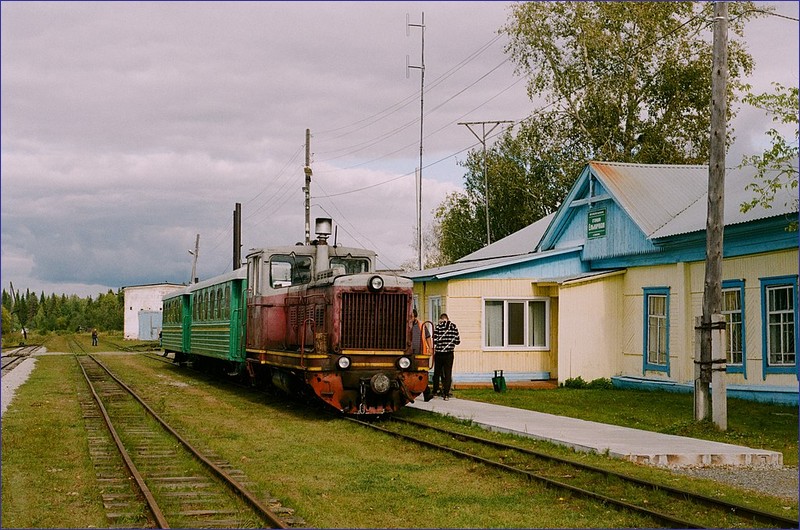
17. Monorails in Russia
On June 27, 2025, Russia’s only operating monorail was permanently closed. The monorail in Moscow had been in operation since 2004. Line 13, 4.7 km long, connected Timiryazevskaya station with Ulitsa Sergeya Eyzenshteyna. It soon became apparent that the monorail was too slow, ran rarely and its route didn’t meet the needs of Moscow’s residents. Operating costs were very high, and ridership declined steadily year after year. In recent years, the monorail ran every 30 minutes between 8 AM and 8 PM and functioned more as a tourist attraction than a means of public transportation.
In 2025, a decision was made to shut down the line. In the coming years, the elevated railway route will be transformed into a park modeled after New York’s High Line.
Other similar projects in Russia include a monorail built between Saint Petersburg and Tsarskoye Selo in 1921. Within four months, 12 kilometers of the planned 32-kilometer line were completed. However, the project was abandoned in May 1922 due to lack of funds. In the 1920s–1930s, several experimental monorails were also constructed.
18. Funicular railways in Russia
There are only three operational funicular in Russia
The Vladivostok Funicular – is one of the city’s top tourist attractions. The line runs along the Eagle’s Nest Hill, and passengers travel a short distance in red and blue cars. Line length is 183 meters and one-way ride lasts about 2 minutes.
In 1959, Soviet leader Nikita Khrushchev initiated a plan to build a “Soviet San Francisco,” inspired by his recent visit to the American city. Shortly afterward, the “Big Vladivostok” project was launched, drastically transforming the city’s appearance. The funicular opened in 1962 and is well-known for its scenic view over Zolotoy Rog (Golden Horn) Bay.
Sochi Funicular – there is likely one operational funicular in Sochi, serving the “Sochinsky” Sanatorium. Originally opened in 1934 was closed in 2002. The funicular was rebuild and reopened 2012-2015. Length of the line is 395 meters and elevation difference between stations is 88 meters. The funicular is used by guests staying at the sanatorium. There is also a second funicular in Sochi, formerly serving the “Ordzhonikidze” Sanatorium, but I do not have up-to-date information on its current status.
Nizhny Novgorod Funicular – In September 2024, a rebuilt funicular leading to the Kremlin Hill in Nizhny Novgorod was opened. Previously, a funicular operated on this site from 1896 to 1927.
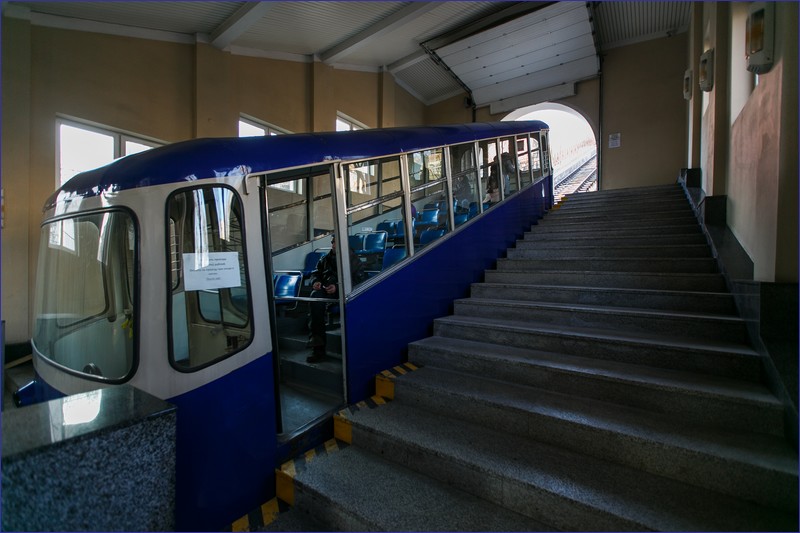
19. Railways on Sakhalin
As far as I know, the railway on Sakhalin functions very well. Regional trains and the night train Yuzhno-Sakhalinsk – Nogliki operate regularly, making it easy to explore part of the island. During the spring and summer season, one of the main attractions in the city of Yuzhno-Sakhalinsk is the children’s railway in the City Park of Culture and Leisure. The route consists of 2 km of circular track and a 200-meter-long branch leading into the depot.
Trains on Sakhalin are operated by Passenger Company Sakhalin, a subsidiary of the Far East Railway (Дальневосточная железная дорога) and Russian Railways.
Train travel on Sakhalin – a comprehensive guide
20. Railways in Crimea
Trains in Crimea run between all major cities of the peninsula and there is a long-distance train from Sevastopol and Simferopol to mainland Russia. Passenger services may be temporarily suspended due to the war. Trains in Crimea are operated by Crimea Railway (Крымская железная дорога) – a publicly owned company established after Russia annexed the peninsula.
Recently Russia finished a railway from Rostov-on-Don to the Crimea through occupied Ukrainian territory. The railway passes through Mariupol and Berdyansk and end in Yakymivka, a south of Melitopol.
Trains from Crimea to mainland Russia pass over the Crimean Bridge – 19 km long bridge opened in 2019. Before opening passenger service travels to Russia on an inter-modal scheme via a combination of train and ferry.
Trains in Crimea – a comprehensive guide
21. Trains in Kaliningrad Oblast
The Kaliningrad Railway is the smallest subsidiary of the Russian Railways by route length (618 km). The railway lines were construct in broad gauge, but there are also standard gauge lines used for freight transport.
There are some domestic trains in Kaliningrad Oblast. Trains are operated by Kaliningrad Railway (Калининградская железная дорога). A two lines are electrified and used for commuter and international transport. Most important domestic routes are Kaliningrad – Svetlogorsk and Kaliningrad – Bagrationovsk. There are international trains from Kaliningrad Oblast to Belarus and Russia. These trains run through Lithuania. Trains are comprised of sleeping cars with 4-bed compartments and VIP carriages (2-bed compartments).
Train travel in Kaliningrad Oblast – a comprehensive guide
Related articles:
Railways in Europe by country
Railways in Asia by country
